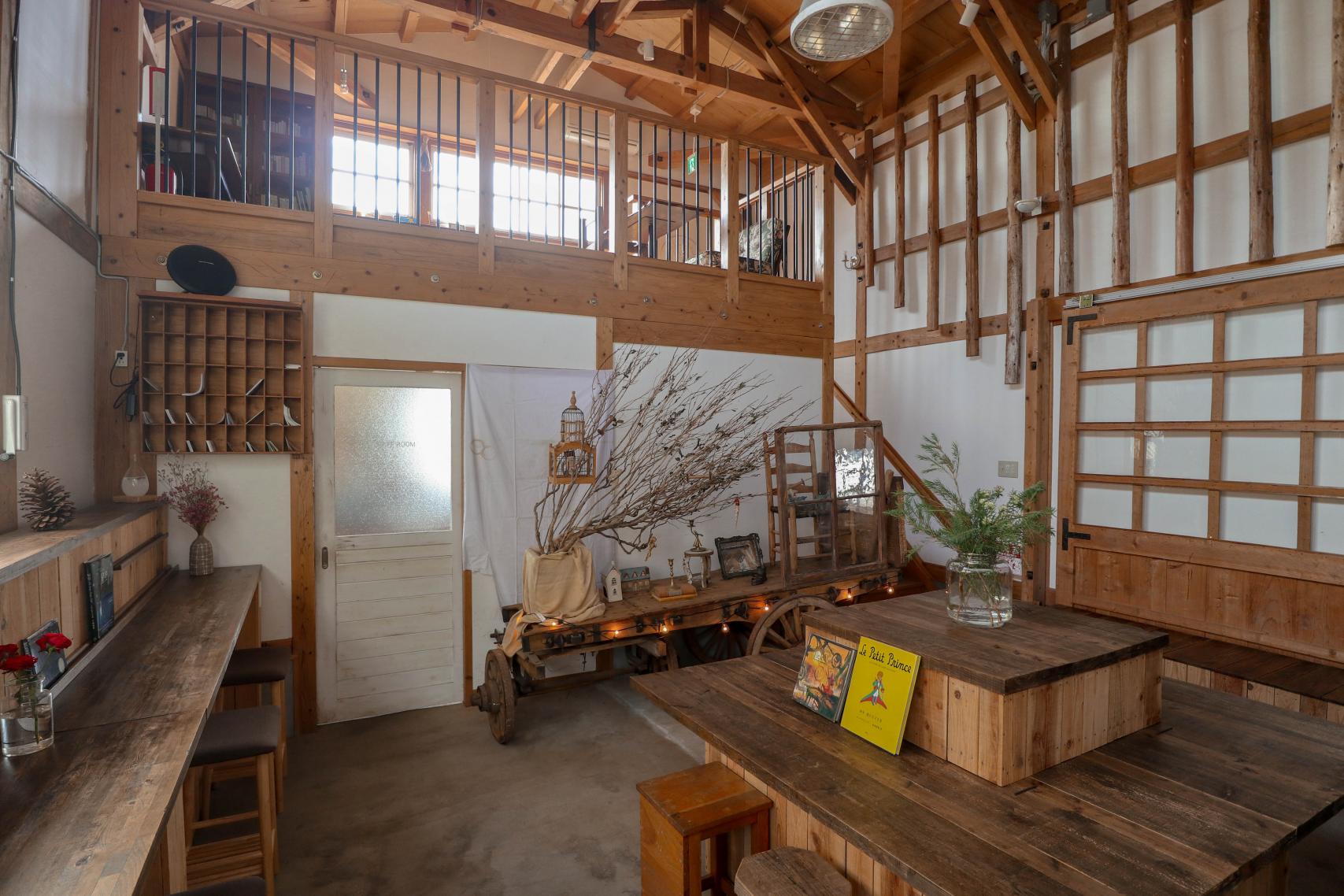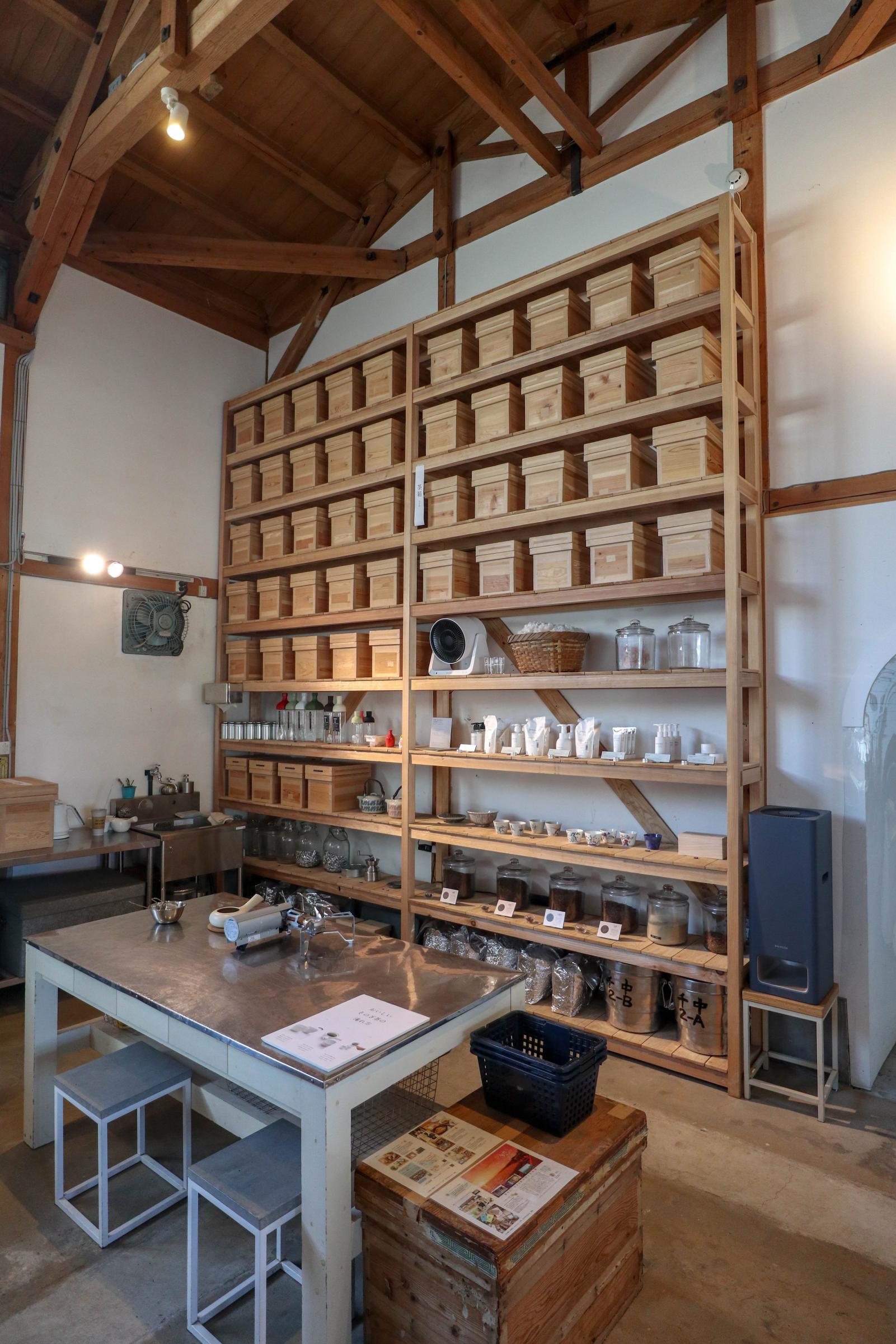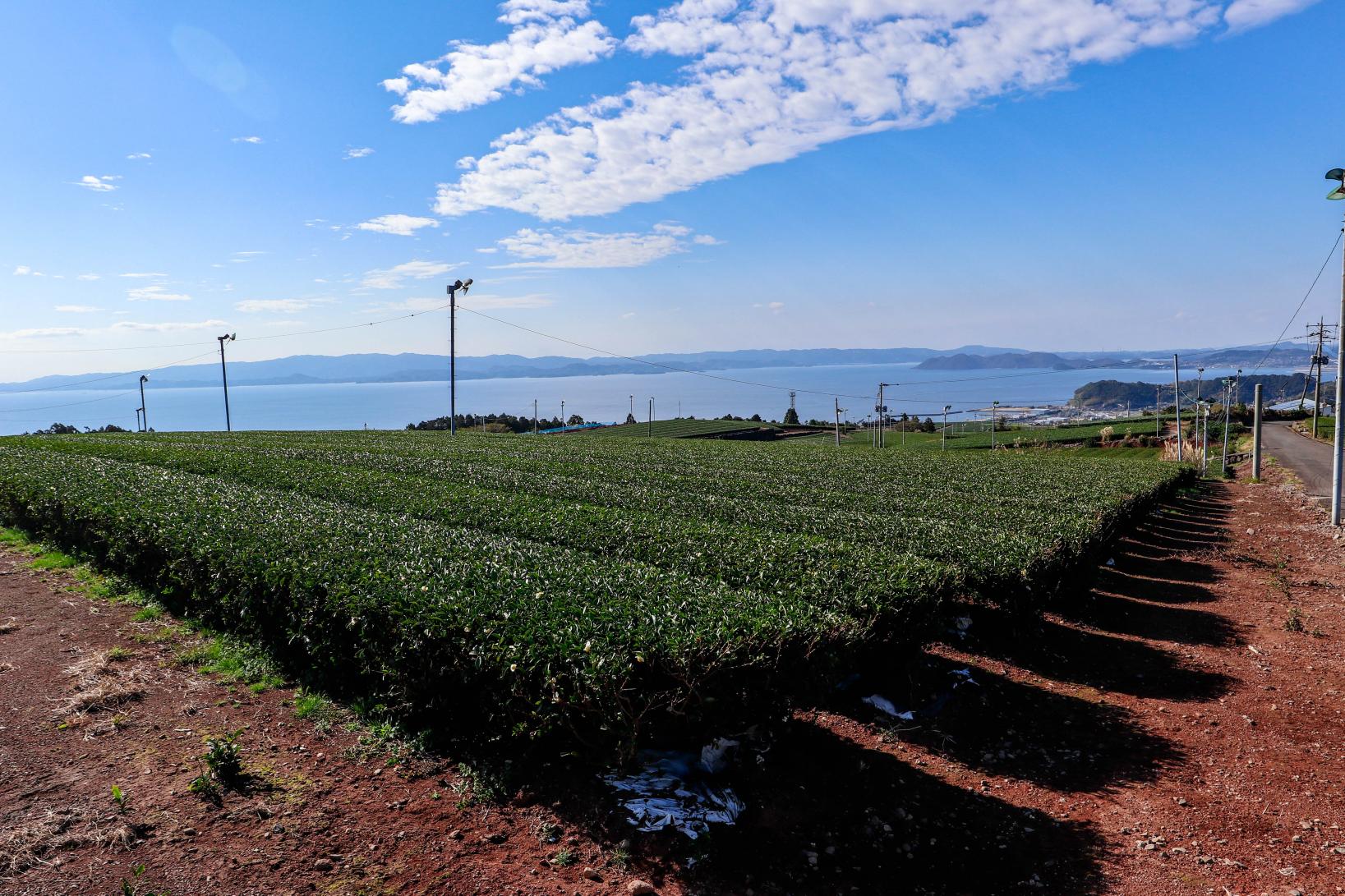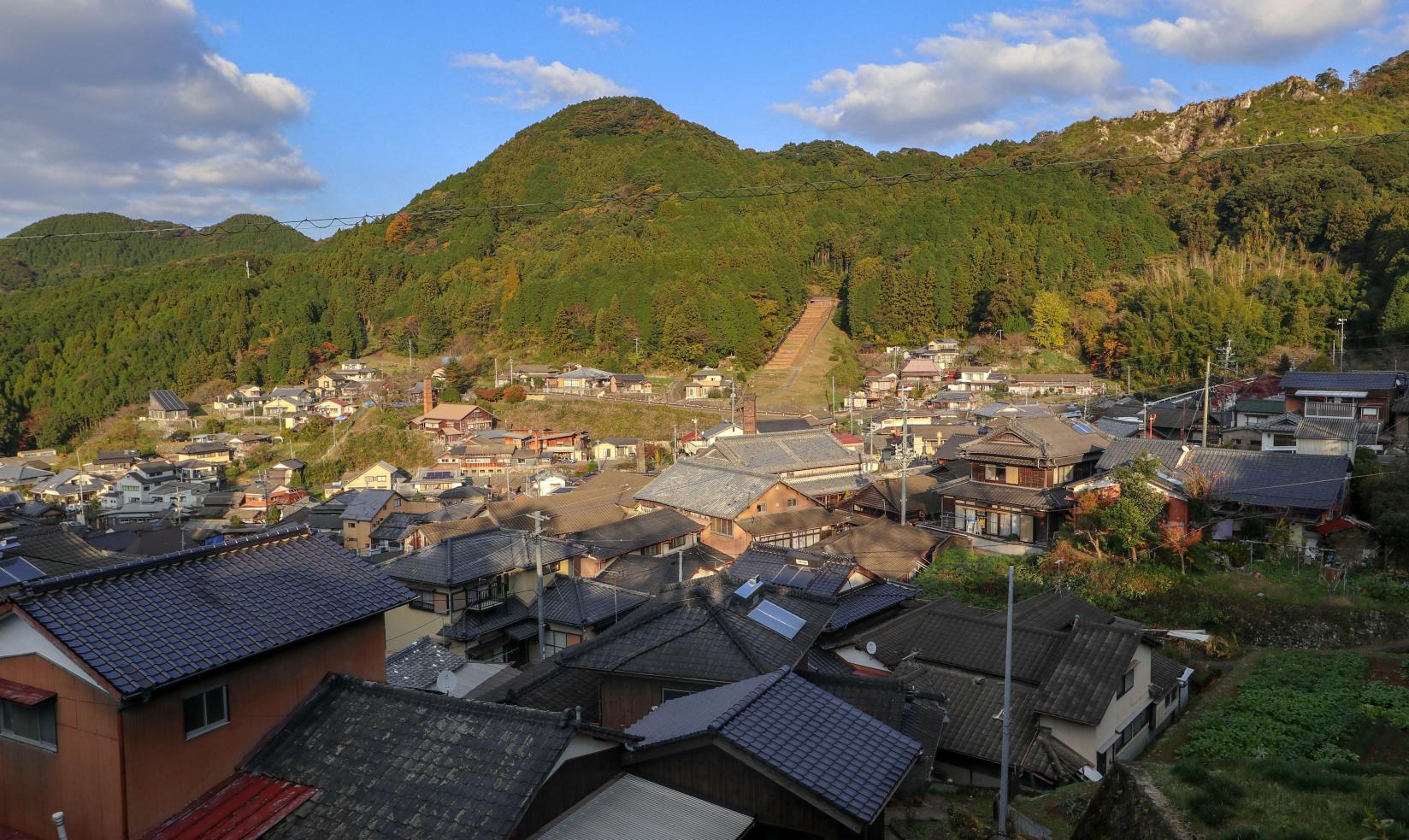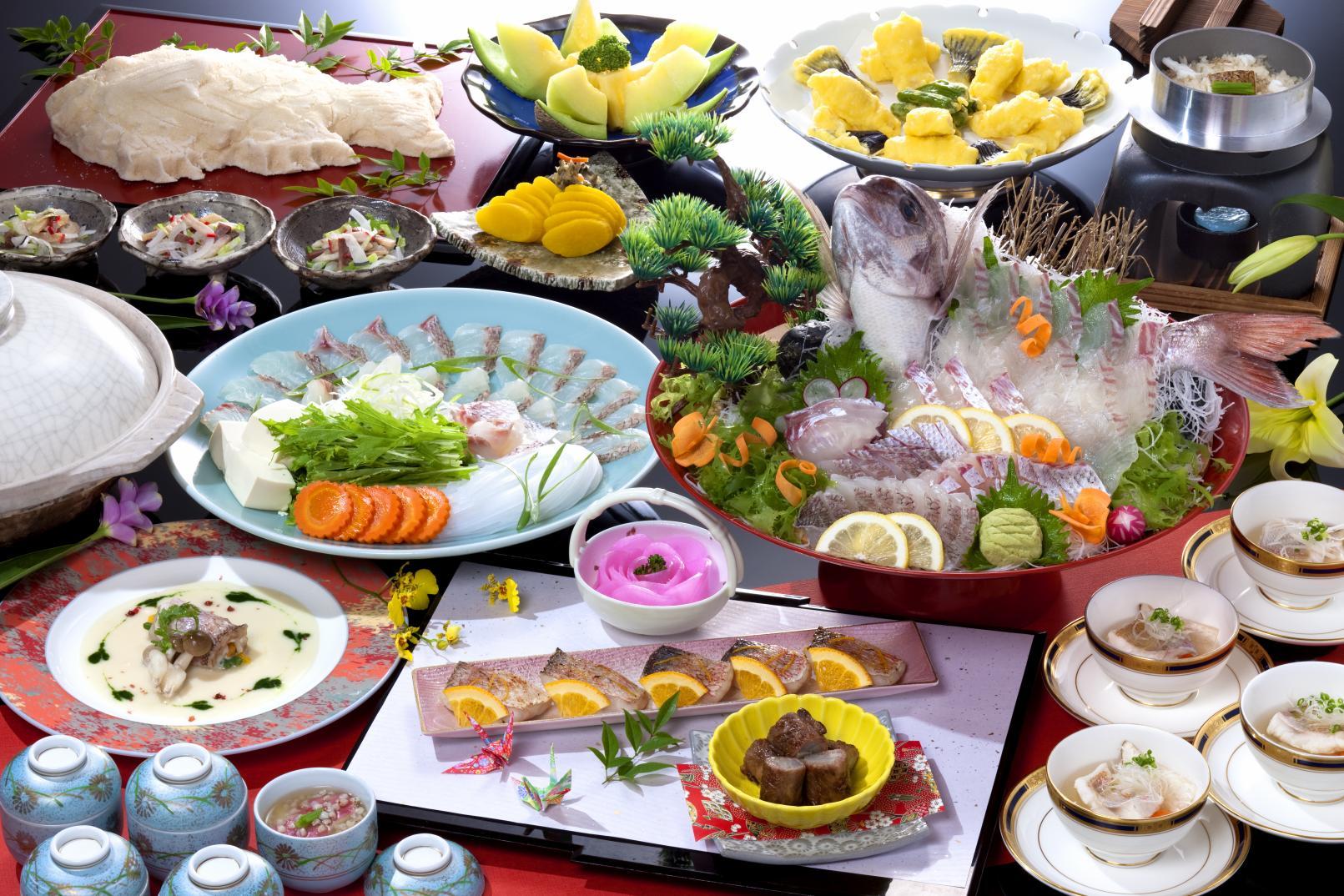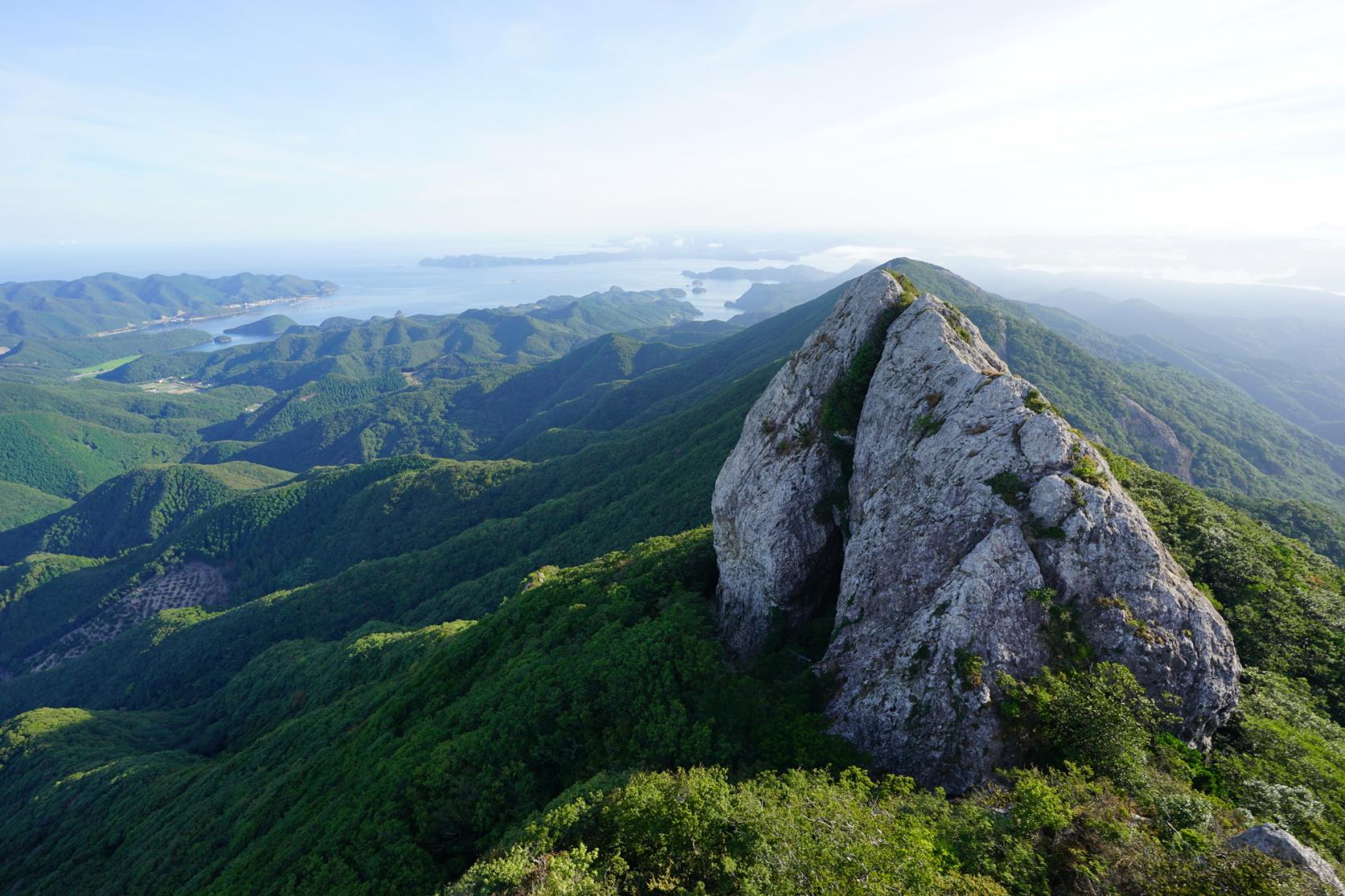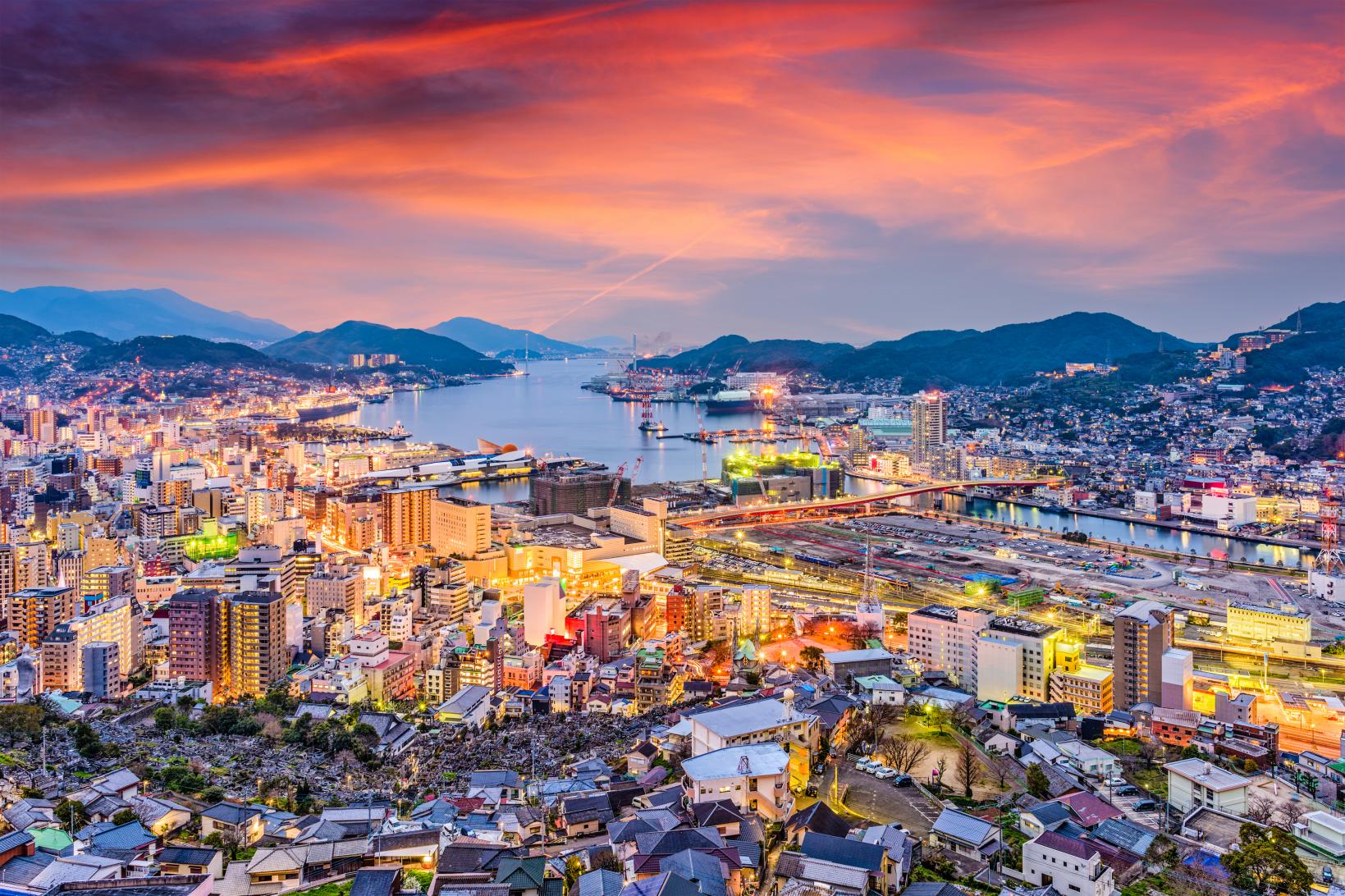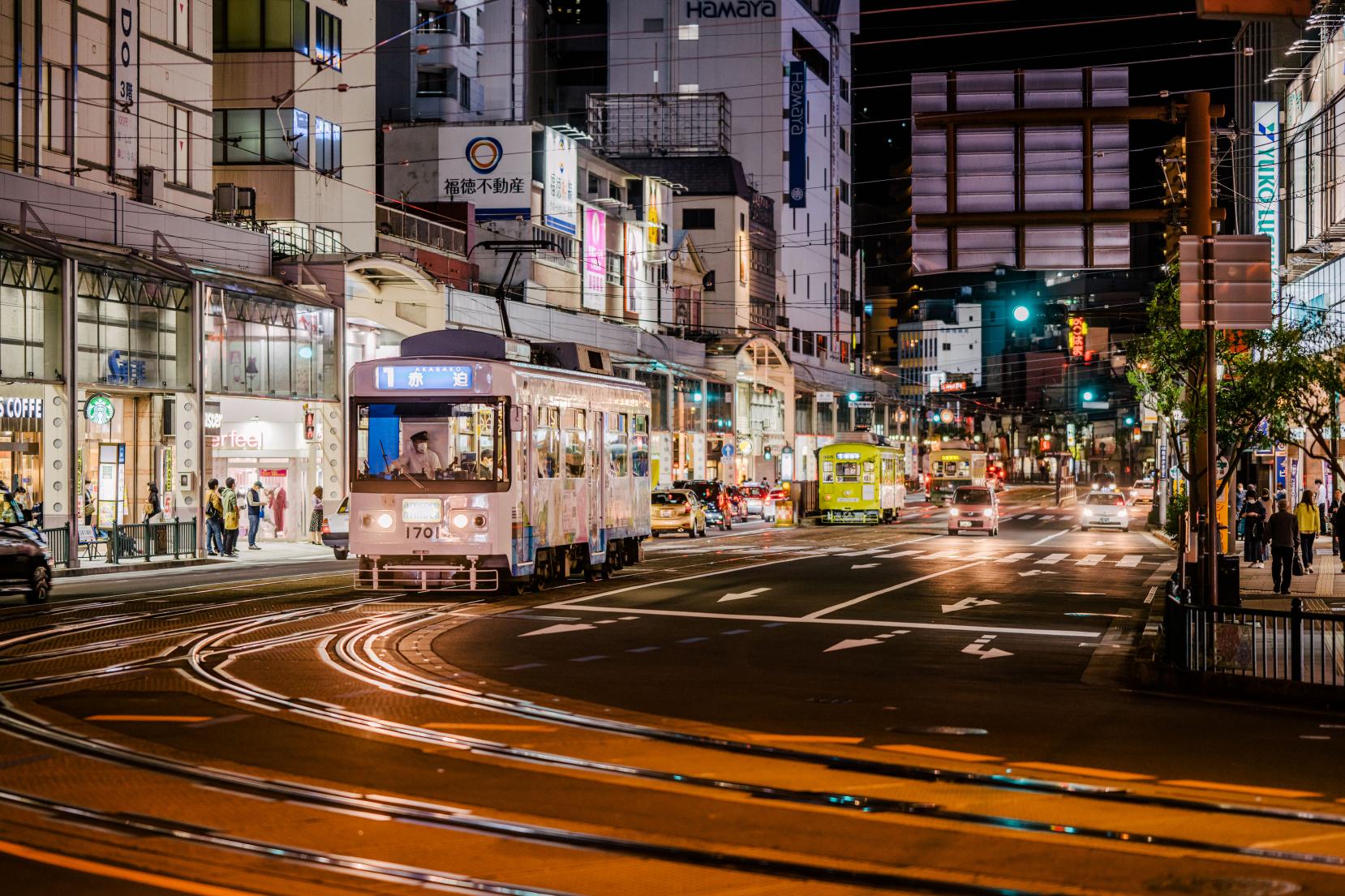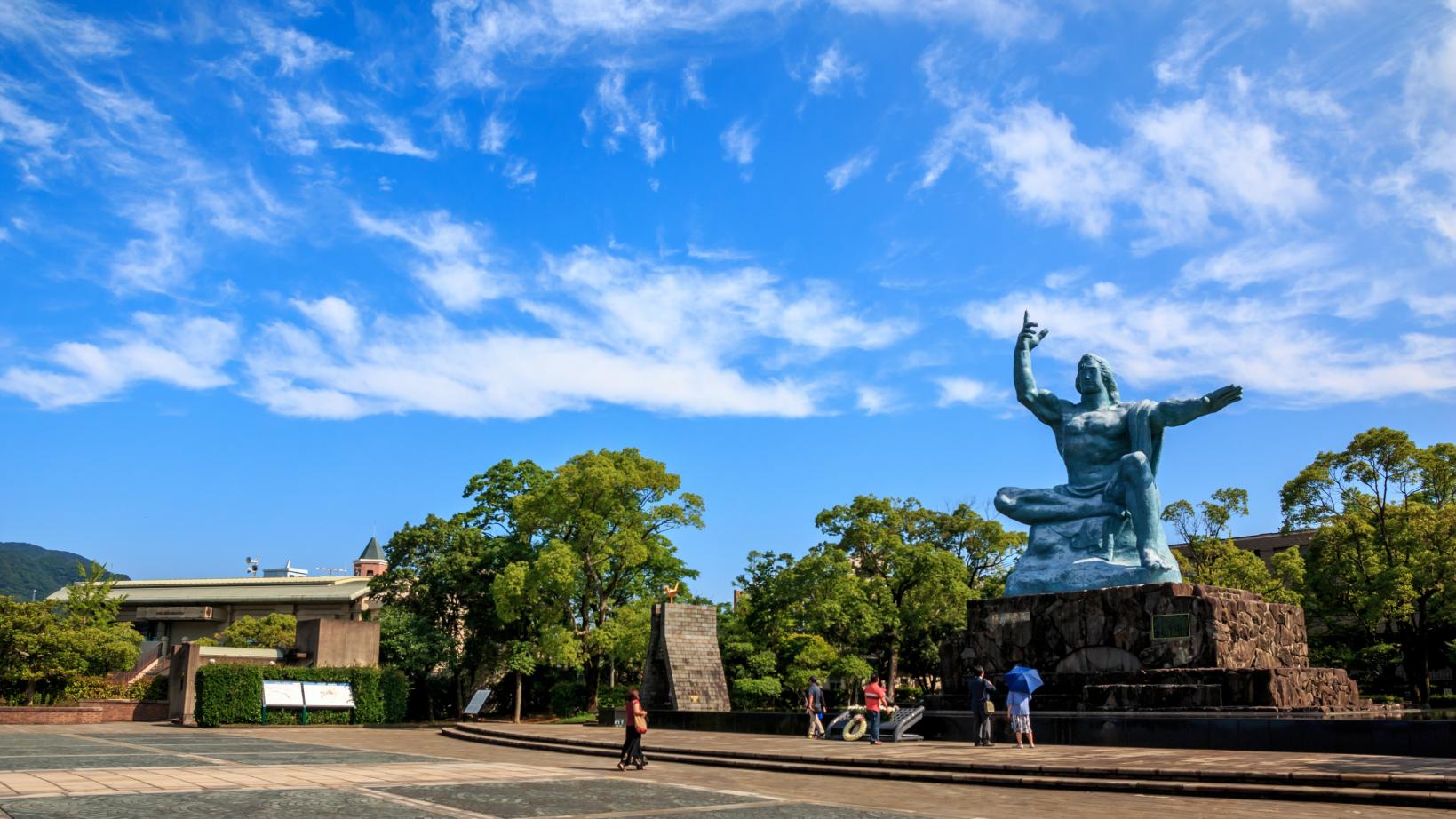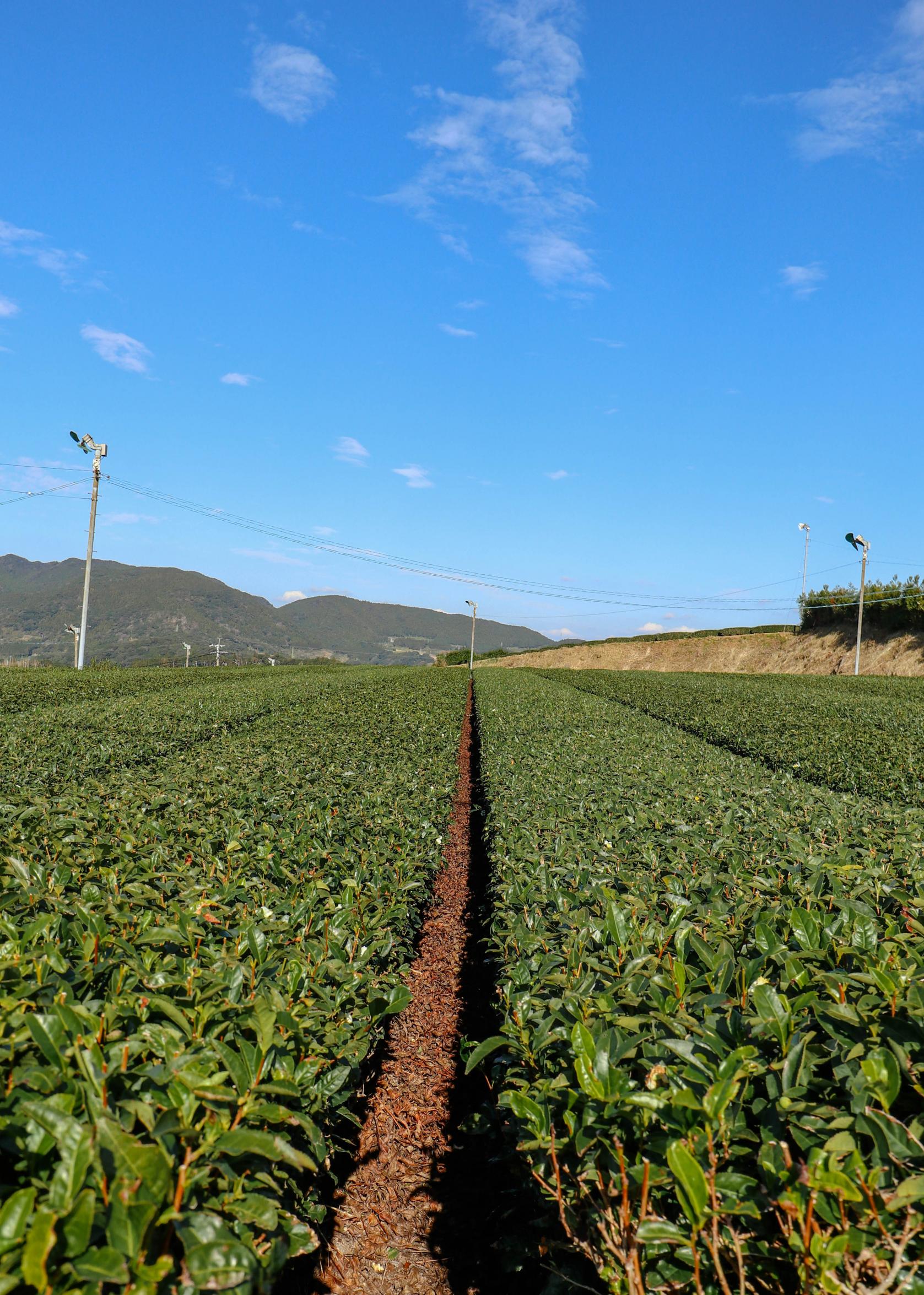
HIGASHI – SONOGI area
The Higashi-Sonogi area is located southeast of Sasebo City. Ten years ago, the area suffered a sharp decline in population, so in 2015, they decided to launch a developmental project, called "Project RE +". Already in more than twenty locations, it has changed and revitalized the area in a sustainable way, and it has given a second life to the local heritage sites.
In the Sonogi area, you can also take a stroll across tea fields which are lined for miles with a lovely magical green. The unusual landscaped allowed us to capture the panorama view of the tea plantation hanging over Nagasaki’s Omura Bay. We felt that Higashi-Sonogi has this uniqueness whereby it combines on one side the deep blue sea, and on the other side filled with green mountains. It was indeed very pleasant and calming to walk around the tea plantation, especially when the weather is gorgeous.
Nakao and Hasami's Porcelain
Nakaoyama in Hasami is a charming village nestled in the mountains. For many years, it has specialized in manufacturing porcelain. It all started 400 years ago with the discovery of kaolinite (white clay) by residents in the neighboring mountains. At the beginning, they focused exclusively on the terracotta process, but it then quickly turned into manufacturing white porcelain. From the 17th century, Hasami's porcelain was well known for its robust bowls at affordable prices. This is how artwork turned into the production of ordinary tableware, and became incorporated into the daily lives of the people in Japan. Back then, most households in Japan had Hasami ware, and the porcelain was shipped to Europe through Dejima Port in Nagasaki. Today, Hasami ware’s modern yet simple designs continue to make it an essential part of homes in Japan and abroad.
We enjoyed strolling around the village and discovering every hidden corner. We were then able to see the superb example of porcelain in all different sizes and shapes across the village. Another peculiarity of the town is the presence of the base part of the porcelain (often removed and thrown away after it’s fired) being used as a decoration on the actual roads and walkways. The narrow streets denote the charms of the village, and sometimes we even wondered if we were on actual roads, or trespassing on someone’s property. Without realizing, we’ve stumbled upon a porcelain mold workshop (where you can try your hand at making pottery). With porcelain elements everywhere, it made us feel like we were at the heart of pottery, and we can picture the lifestyle of these talented craftsmen.
For a different view, at the Nakaoyama's Observatory, you can see the panorama view of the mountainside, and all of the former pottery kilns. Based on the number of kilns that can be seen from the observatory, it is easy to imagine the mass production of pottery in this town back in that period. Of course, where porcelain is made means you will find porcelain shops. We went to Koshun-gama Kiln where we saw various types of modern style Hasami ware.
Higashi-Sonogi is rich in its local heritage and will be of interest to anyone who wants to immerse themselves in rural Japan. We felt a real enthusiasm from the local people to ensure visitors discover their town which is still much unknown.
SHARE
NEXT



